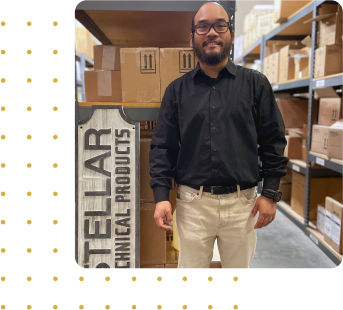Solder is an alloy made of a combination of individual metals used to join metal surfaces together. Solder is used in the production of stained glass, circuit boards, electric motors, roofing components and many other assemblies.
What Are the Metals Used to Make Solder?
Solder is a metal alloy and is typically made mostly of tin plus one to three additional metals such as lead, copper, silver, or antimony. Additional metals are added to pure Tin to either change the melting point or strengthen the alloy.
The exact metal composition of the solder will vary depending on the application and/or project that you are doing.
The most common types of solder metal compositions are the following::
Tin-Lead Solder:
Tin-lead solder is one of the most common types of solder that is used in electronic and industrial applications. It is made of a combination of tin and lead – the most often used solder alloys are 60/40: 60%t tin/40% lead and 63/37: 63% tin/37% lead.
For stained glass applications, 50/50 solder: 50% tin/50% lead is also a popular choice.
Lead-Free Solder:
Due to landfill concerns, lead is one of many substances that have been restricted globally. There are a wide assortment of lead-free solders that are counterparts to the lead solders and are equally effective. Common lead-free alloys are Tin-Copper and Tin-Copper-Silver.
As mentioned above, there are both lead and lead-free variations of solder. Stained-glass applications mostly use a solid solder wire (either lead or lead-free) as well as an external flux. Lead-free solders typically require a higher melting point than lead solders:
|
50% Tin/ 50% Lead
|
361 - 413 degrees F |
| 60% Tin/ 40% Lead | 361 - 372 degrees F |
| AQ Lead Free Alloy | 403 - 453 degrees F |
| 99.3% Tin /0.7% Copper | 441 - 441 degrees F |
The Forms of Solder
There are several forms of solder that are available. The form of solder that you choose depends on the application.
1. Solder Wire – Wire solder is used for hand-soldering parts using a hand-held soldering iron.
2. Solder Bar – Solder bar comes in ingots, bars or sticks for melting in a solder pot. Pots are used for dip soldering components or on conveyorized wave solder lines.
3. Solder Paste – Solder paste is generally used for circuit board assembly applications where the paste is stenciled onto a PCB, micro miniature electronic components are robotically placed into the wet paste, and then reflowed in a conveyorized oven.
4. Solder Foil, Ribbon and Preforms – used for advanced manufacturing methods.
How Does Soldering Work?
Soldering is the process of heating assembly parts to flow molten solder into a joint between the two parts. The parts are heated to 100° - 200°F above the melting point of the solder so that the solder becomes molten and flows, creating a solder joint.
Which Flux Is Best For Soldering?
Flux is a chemical metal cleaning agent that helps the solder to “wet” to the base metals, preventing the molten solder from oxidizing during the bonding process.
Flux comes in four main families which are inorganic or organic acid water-soluble, no clean resin and natural rosin. Again, the type of flux you use depends on the metal surfaces being joined and your assembly process.
If you aren’t sure which type of solder is best for your job, please contact our technical service team. They would be happy to help you!

